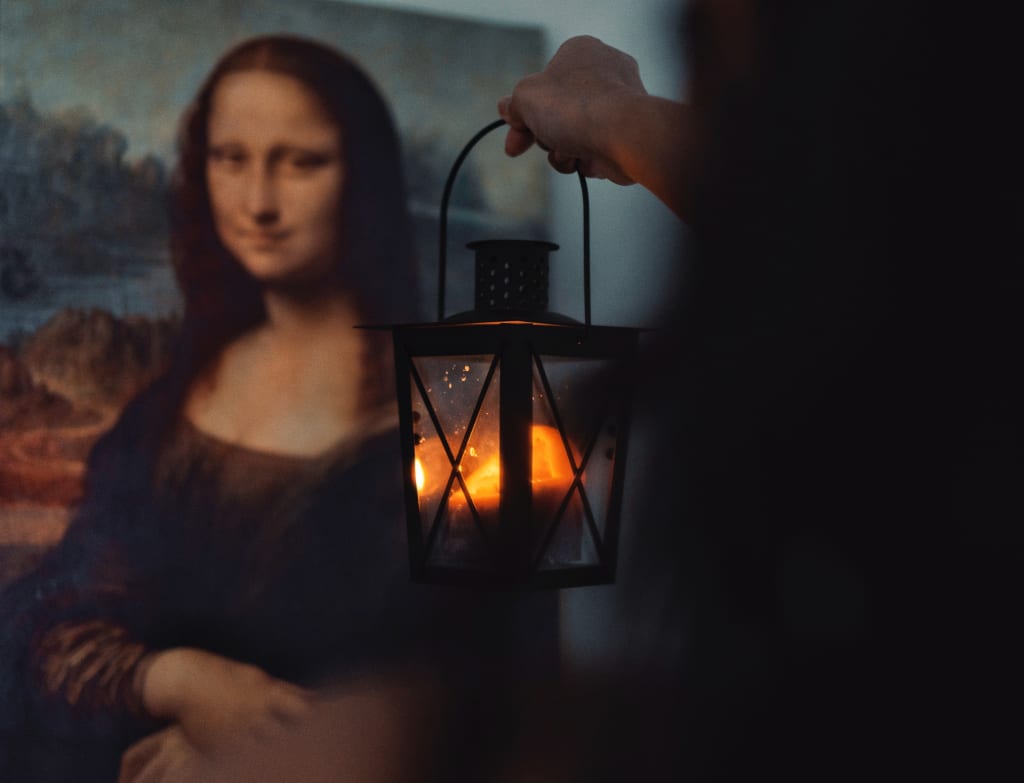Content warning
This story may contain sensitive material or discuss topics that some readers may find distressing. Reader discretion is advised. The views and opinions expressed in this story are those of the author and do not necessarily reflect the official policy or position of Vocal.
Giaconda, Monna Lisa
The Mona Lisa, which Leonardo da Vinci, an Italian artist, created during the Renaissance, continues to captivate viewers with its enigmatic smile and intricate details

One of the most well-known works of art in the world is Giaconda's painting, also known as the Mona Lisa. The Mona Lisa, which Leonardo da Vinci, an Italian artist, created during the Renaissance, continues to captivate viewers with its enigmatic smile and intricate details. The painting has become an icon of art thanks to its extensive history and numerous interpretations, inspiring numerous artists, scholars, and admirers. The Giaconda's fascinating history, as well as it's enduring appeal and artistic methods, will be the subject of this essay.
Histories of the Past:
Leonardo da Vinci, a polymath renowned for his proficiency in painting, sculpture, and science, created the Mona Lisa between 1503 and 1506. The portrait, commissioned by Florentine businessman Francesco del Giocondo, was intended to portray Giocondo's wife, Lisa Gherardini. By giving his portraits an air of mystery, Leonardo broke away from the usual portrait style of the time, creating a timeless masterpiece that has captivated viewers for centuries.
Creative Methods and New Ideas:
In the Mona Lisa, Leonardo's innovative methods and meticulous attention to detail are on display. The composition is executed utilizing the sfumato procedure, portrayed by inconspicuous changes among varieties and tones, making a feeling of non-abrasiveness and mixing. The delicate gradations of Lisa's skin and the atmospheric landscape in the background are particularly noticeable thanks to this method, which gives the portrait a realistic and ethereal quality.
Leonardo's mastery of chiaroscuro, or the play between light and shadow, is another striking feature of the Mona Lisa. The painting's depth and three-dimensionality are enhanced by the subtle modeling of light on Lisa's face, giving the impression that she is almost real. Leonardo's use of these techniques established new standards for portraiture and influenced subsequent generations of artists who attempted to imitate him.
The Mysterious Smile:
The enigmatic smile of Lisa Gherardini is one of the most intriguing aspects of the Mona Lisa. Leonardo captures the ambiguity of her expression with skill, leaving viewers to speculate. When one looks at the painting, the smile seems to change, making it appear elusive and ever-changing. Over the years, a plethora of theories and interpretations have emerged, ranging from speculations regarding the sitter's identity to suggestions of hidden symbolism. This mystery has contributed to the painting's continued popularity and sparked a plethora of debates among art historians and enthusiasts.
Legacy and influence:
The influence of the Mona Lisa goes far beyond the realm of art. Numerous writers, poets, and artists have sought to convey its captivating qualities in their works. Because of its status as an iconic work, the painting has become a symbol of Western art because it exemplifies the pinnacle of beauty, elegance, and artistic achievement. The image of the Mona Lisa has been re-created and satirized in a variety of ways, including in advertising campaigns and references to popular culture, further cementing its place in the collective consciousness.
Preserving and Exhibiting:
Because of its significance, the Mona Lisa must be carefully preserved and displayed. The painting has been in the Louvre Museum in Paris since 1797 and is protected by bulletproof glass and a climate-controlled environment. Every year, millions of people come to the Louvre to see this masterpiece, which is prominently displayed in a specially designed exhibition space. Because of the painting's popularity, crowd control measures have been put in place to ensure that visitors can get a close-up look at it.
Conclusion:
The Mona Lisa, also known as the Giaconda, is still a mysterious masterpiece that continues to captivate audiences all over the world. The painting's enduring allure is a result of Leonardo da Vinci's extraordinary artistic methods and the mystery surrounding the sitter's expression. As a symbol of Western craftsmanship, the Mona Lisa has made history, moving endless specialists and admirers and cementing its place as one of the best show-stoppers in mankind's set of experiences.





Comments
There are no comments for this story
Be the first to respond and start the conversation.